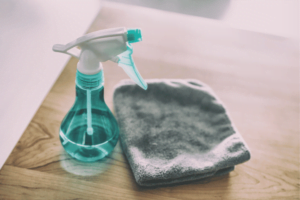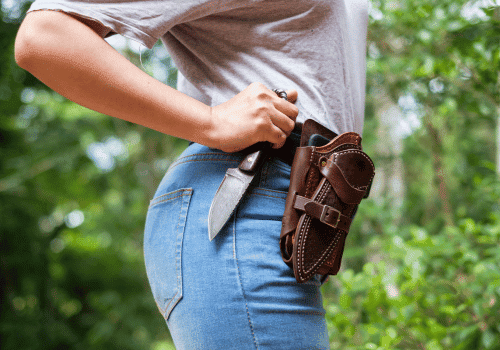Knives are an essential tool in any kitchen, whether professional or at home. They are used to prepare a wide range of foods, from fruits and vegetables to raw meats and fish. Because of this, it is crucial to maintain their cleanliness and sanitation. Proper knife hygiene not only ensures food safety but also prolongs the life of the knives and prevents cross-contamination. In this blog post, we will explore the importance of cleaning and sanitizing knives, the potential risks of neglecting this practice, and provide practical tips on how to properly care for your knives.
The Importance of Clean and Sanitized Knives

1. Preventing Foodborne Illnesses
One of the primary reasons to clean and sanitize knives is to prevent foodborne illnesses. Raw meats, poultry, fish, and even some vegetables can harbor harmful bacteria such as Salmonella, E. coli, and Listeria. If these pathogens are transferred from one food item to another via an unclean knife, they can cause severe food poisoning. Symptoms of foodborne illnesses can range from mild stomach upset to severe dehydration, organ failure, and even death in vulnerable populations.
2. Avoiding Cross-Contamination
Cross-contamination occurs when bacteria or other harmful microorganisms are transferred from one surface or food item to another. Knives, being in direct contact with various foods, are a common vehicle for cross-contamination. For instance, using the same knife to cut raw chicken and then chopping vegetables without cleaning it in between can spread bacteria from the meat to the vegetables. This practice can pose serious health risks, especially if the vegetables are consumed raw.
3. Maintaining Food Quality and Flavor
Dirty knives can affect the quality and flavor of food. Residual food particles left on a knife can introduce off-flavors and undesirable textures to the next food item being prepared. For example, cutting a fruit with a knife that was previously used for garlic or onions without cleaning it can impart a strong, unwanted taste to the fruit. Ensuring knives are clean helps maintain the integrity and enjoyment of the food’s natural flavors.
4. Extending Knife Longevity
Regular cleaning and proper maintenance of knives can significantly extend their lifespan. Food particles, especially acidic ones, can corrode the blade over time if left uncleaned. Moreover, using dirty knives on various foods can dull the blade more quickly, necessitating frequent sharpening or replacement. By keeping knives clean and well-maintained, you can preserve their sharpness and functionality for a longer period.
5. Ensuring Safe Handling
A clean knife is a safer knife. Food residues, especially greasy or sticky substances, can make the knife handle slippery, increasing the risk of accidental cuts and injuries. Regular cleaning ensures a secure grip and safer handling, reducing the likelihood of kitchen accidents.
The Risks of Neglecting Knife Hygiene
Failing to clean and sanitize knives can have serious consequences, both in terms of health and kitchen safety. Here are some risks associated with poor knife hygiene:

- Food Poisoning: As mentioned earlier, foodborne pathogens can cause severe illness. Contaminated knives are a common source of these pathogens in the kitchen.
- Cross-Contamination: Unclean knives can spread bacteria between different foods, increasing the risk of contamination.
- Decreased Food Quality: Residual food particles can alter the taste and texture of foods, negatively impacting the overall quality of the dish.
- Knife Damage: Acidic and corrosive food particles can damage the blade over time, reducing its effectiveness and lifespan.
- Injury Risk: A slippery knife handle due to food residues can lead to accidental cuts and injuries.
How to Properly Clean and Sanitize Knives
To ensure your knives are always clean and safe to use, follow these steps for proper cleaning and sanitizing:
1. Immediate Cleaning After Use
Whenever possible, clean your knives immediately after use. This prevents food residues from drying and hardening on the blade, making them easier to clean. Use warm, soapy water and a sponge or dishcloth to scrub the blade and handle thoroughly. Rinse with clean water and dry immediately with a clean towel to prevent water spots and rust.
2. Sanitizing the Knives
Sanitizing goes beyond basic cleaning and involves using a disinfectant to kill any remaining bacteria. Here’s how you can sanitize your knives:

- Bleach Solution: Mix one tablespoon of unscented liquid bleach with one gallon of water. Submerge the knife blade in the solution for about one minute. Rinse thoroughly with clean water and dry immediately.
- Vinegar: White vinegar is a natural disinfectant. Wipe the knife blade with a cloth soaked in vinegar, then rinse and dry.
- Commercial Sanitizers: There are various commercial sanitizing sprays and wipes available that are safe for kitchen use. Follow the manufacturer’s instructions for the best results.
3. Storing Knives Properly
Proper storage is also crucial for maintaining knife hygiene. Store knives in a clean, dry place such as a knife block, magnetic strip, or protective sheath. Avoid storing them loosely in a drawer, as this can cause the blades to dull and increase the risk of contamination.
4. Regular Maintenance
In addition to regular cleaning and sanitizing, perform routine maintenance on your knives to keep them in top condition. This includes:
- Sharpening: Regularly sharpen your knives using a sharpening stone, honing rod, or professional sharpening service. A sharp knife is not only more efficient but also safer to use.
- Inspection: Periodically inspect your knives for any signs of damage, such as chips in the blade or a loose handle. Address any issues promptly to prevent accidents and maintain the knife’s performance.
Best Practices for Knife Hygiene
To ensure the highest level of knife hygiene, adopt these best practices in your kitchen routine:
- Separate Knives for Different Foods: If possible, use different knives for raw meats, vegetables, and cooked foods. This reduces the risk of cross-contamination.
- Use Cutting Boards Appropriately: Always use a clean cutting board when using a knife. Have separate cutting boards for raw meat, poultry, and seafood, and another for vegetables and ready-to-eat foods.
- Educate Kitchen Staff: In a professional kitchen, ensure all staff members are trained in proper knife cleaning and sanitizing procedures. Regularly review and enforce hygiene practices.
- Stay Informed: Keep up with the latest food safety guidelines and best practices to ensure you are following the most current recommendations.
Extra Advice
- Be Safe: Always handle knives with caution. They may be harmful and sharp.
- Regular Cleaning: Ensure your knife is clean each time you use it. That way, it’s prepared for your next culinary endeavor.
- Sharp Is Secure: Sharp knives are always clean knives. Furthermore, using a sharp knife is safer.
- Include Other Parties: Give your loved ones or friends a knife-cleaning lesson. For everyone, it’s a valuable talent.
- Frequent examinations: Check your knives from time to time. It’s time to sharpen them if they are becoming dull.
Conclusion
Cleaning and sanitizing knives are critical practices in maintaining a safe and efficient kitchen. By preventing foodborne illnesses, avoiding cross-contamination, maintaining food quality, extending knife longevity, and ensuring safe handling, you contribute to a healthier and more enjoyable cooking experience. Adopting proper cleaning and sanitizing techniques, along with best practices for knife hygiene, can significantly reduce the risks associated with poor knife maintenance. Remember, a clean knife is not just a matter of kitchen tidiness—it’s a crucial step in safeguarding health and ensuring culinary success.

I like this web blog it’s a master piece! Glad I detected this ohttps://69v.topn google.Raise your business
Fantastic post however I was wanting to know if you could write a litte more on this subject? I’d be very thankful if you could elaborate a little bit further. Thanks!
Создание и продвижение сайта https://seosearchmsk.ru в ТОП Яндекса в Москве. Цены гибкое, высокое качество раскрутки и продвижения сайтов. Эксклюзивный дизайн и уникальное торговое предложение.
There is noticeably a bundle to identify about this. I believe you made some nice points in features also.
Appreciating the commitment you put into your blog and in depth information you offer. It’s awesome to come across a blog every once in a while that isn’t the same old rehashed information. Excellent read! I’ve saved your site and I’m adding your RSS feeds to my Google account.
Pretty! This was a really wonderful post. Thank you for your provided information.
Lovely just what I was looking for.Thanks to the author for taking his clock time on this one.